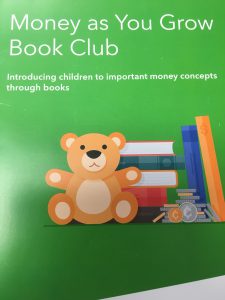The Consumer Financial Protection Bureau, (CFPB) has defined financial capacity as a the combination of attitude, knowledge, skills, and self-efficacy needed to make and exercise money management decisions that best fit the circumstances of one’s life, within an enabling environment that includes, but is not limited to, access to appropriate financial services.
Many of the attitudes, knowledge and skills needed to build financial capacity can be learned. People learn behavior through a variety of contexts. Children, in particular, learn through practices modeled by a parent or caregiver. In fact, research shows that parents and caregivers have the most influence on their children’s financial capability.
If you are like most parents, you probably recognize this—and you are interested in setting your kids on a good path toward financial well-being. However, many parents also say they do not always have time, tools, or personal confidence to start talking about money thinking their children will learn about it in school, later on, when they are old enough to understand.
This is most unfortunate. According to the Council for Economic Education 2018 Survey of the States, only 17 States require high school students to take a course in personal finance. So, if a parent isn’t teaching their children basic money/financial skills who is? Economical and financial literacy is a foundational element to achieving financial health and financial well-being. It is never too early (or too late) to start building this.
Talking to children about money, even in EARLY CHILDHOOD, helps children build the skills they need later in life. Early childhood education experts like to call this scaffolding. You are setting the framework…the support…the platform, encouraging financial capability milestones from early childhood into young adulthood. Children can learn the behaviors, knowledge, skills, and personal characteristics that support financial health and well-being.
Books can help start these critical early conversation. The CFPB has made it EASY! Parents can be their child’s first financial capability teacher! The University of Wisconsin-Extension Family Living Programs and the University of Wisconsin-Madison Center for Financial Security have selected books for the CFPB Money as you Grow Book Club. This program uses easy to read and understand children’s books to discuss money concepts. These books include many favorites:
- A Bargain for Frances, by Russell Hoban
- A Chair for My Mother, by Vera Williams
- Alexander, Who Used to Be Rich Last Sunday, by Judith Viorst
- Count on Pablo, by Barbara deRubertis
- Cuenta con Pablo, by Barbara deRubertis
- Curious George Saves His Pennies, by Margaret and H.AS. Rey
- Just Shopping With Mom, by Mercer Mayer
- Lemonade in Winter, by Emily Jenkins
- My Rows and Piles of Coins, by Tololwa M. Mollel
- Ox-Cart Man, by Donald Hall
- Sheep in a Shop, by Nancy Shaw
- The Berenstain Bears & Mama’s New Job, by Stan & Jan Berenstain
- The Berenstain Bears’ Trouble With Money by Stan and Jan Berenstain
- The Purse, by Kathy Caple
- The Rag Coat, by Lauren Mills
- Those Shoes, by Maribeth Boelts
- Tia Isa Wants a Car, by Meg Medina
- Tia Isa Quiere un Carro, by Meg Medina
Fortunately, many of the building blocks for good financial decision making – like self-regulation, patience, planning, and problem-solving – do not require a lot of financial know-how.
Reading books with children is a creative way to learn about the many sides of money management. Pick up a few of the titles at your local library and influence your children’s financial capability. Building good habits leads to a life of good financial health and well-being.
Example of key ideas from reading books:
| PLANNING | How Children Show It |
| Making Decisions | Can look at a few choices and select on what will bring the best results. |
| Setting Goals | Can follow a multi–step plan. |
| Prioritizing | Can prioritize choices when they want two or more things at once. |
| Solving problems
|
Can describe problems and come up with a few idea to make things better. |
| MONEY | |
| Earning | Can identify the different jobs people in the family and in the community do to earn money and keep it safe. |
| Spending | Make spending choices with their own money – real or play. |
| Saving | Keeps money in a safe place and keeps track of amount saved for future spending. |
| Sharing and borrowing | Can explain the difference between lending and giving something away. |
| ME | |
| Self-control | Can talk about times when they were able to wait and how they were able to do it. |
| Follow-through | Can identify who they can turn to for help reaching a goal, or what tools or tricks might help them stick with a plan. |
| Staying true to yourself | Name one special thing they like about themselves and their loved ones. |
| Flexibility | Can talk about a time when their plans did not turn out how they wanted and what they did instead. |
Resource: https://www.consumerfinance.gov/consumer-tools/money-as-you-grow/
- It’s Chestnut Season! - December 16, 2022
- Persimmons: Food of the Gods - November 23, 2022
- Have You Ever Thought About Entering Baked Goods in the North Florida Fair? - October 28, 2022

